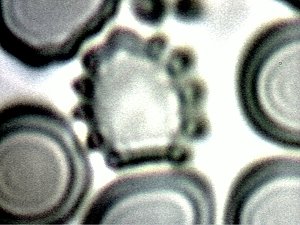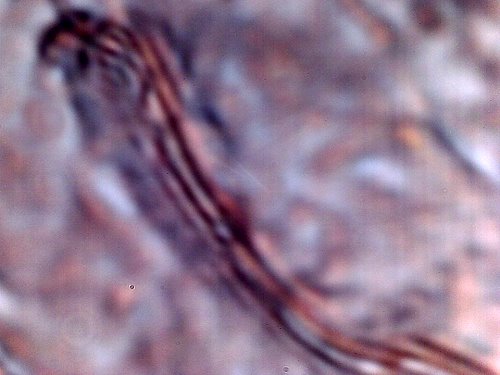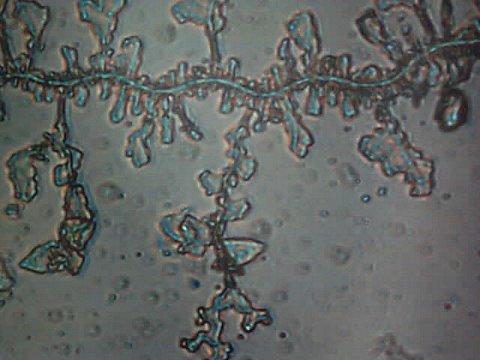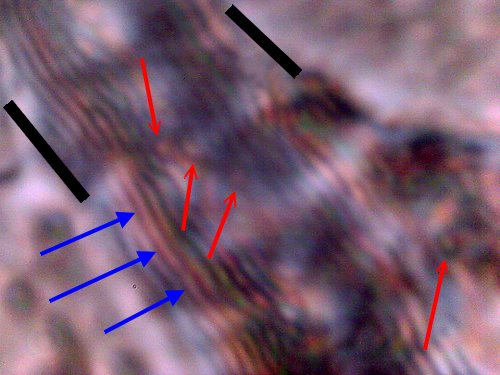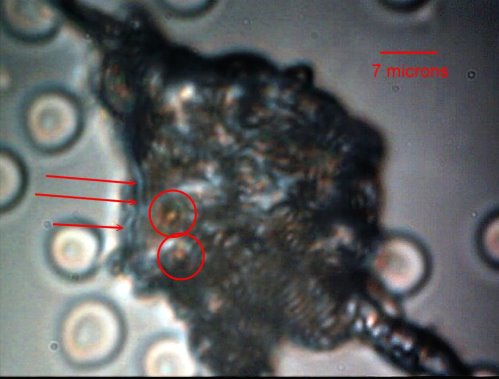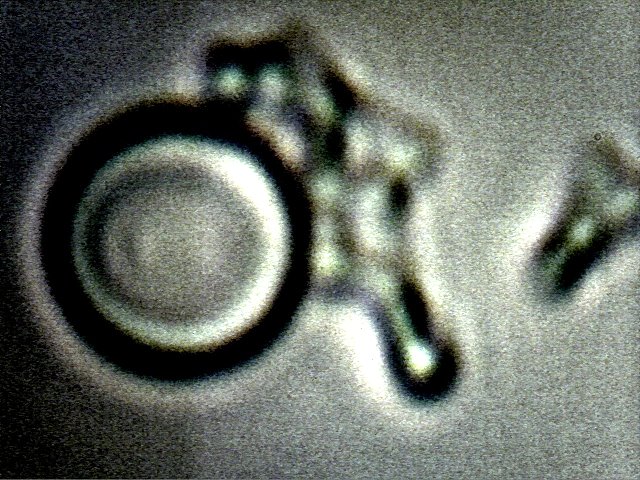
ANIMAL BLOOD
Testing on two canine blood samples (microscopy pictures of the canine blood cells are included on this page) sent to Clifford Carnicom reveal that both animals show the existence of the chlamydia-like organism within the blood and the serum in a fashion identical to that which has been repeatedly found in human blood samples. This research reveals that the consideration of biological symptoms, structures and characteristics of the Morgellons condition must now be extended to include other life forms beyond that of the human.
At a minimum, this consideration now extends to the mammalian segment of the animal kingdom. There is additional research (external DNA examination and culture analyses) underway which suggests that this discovery may extend further to include the plant kingdom or the food supply; further examinations are required to clarify the initial findings.

